Puma x First Mile Collection Embraces Circularity and Social Impact


Plastic pollution is an undeniably huge problem, and no industry can dodge the issue. But using plastic waste to make new products offers one solution, and Puma is learning all about it.
Last month, the brand launched a sportswear collection made from recycled plastic, with a social impact twist. Puma developed the collection with the First Mile Coalition, a network of self-employed refuse collectors in Taiwan, Honduras and Haiti, who remove plastic waste from ecosystems and sell it to make a living.
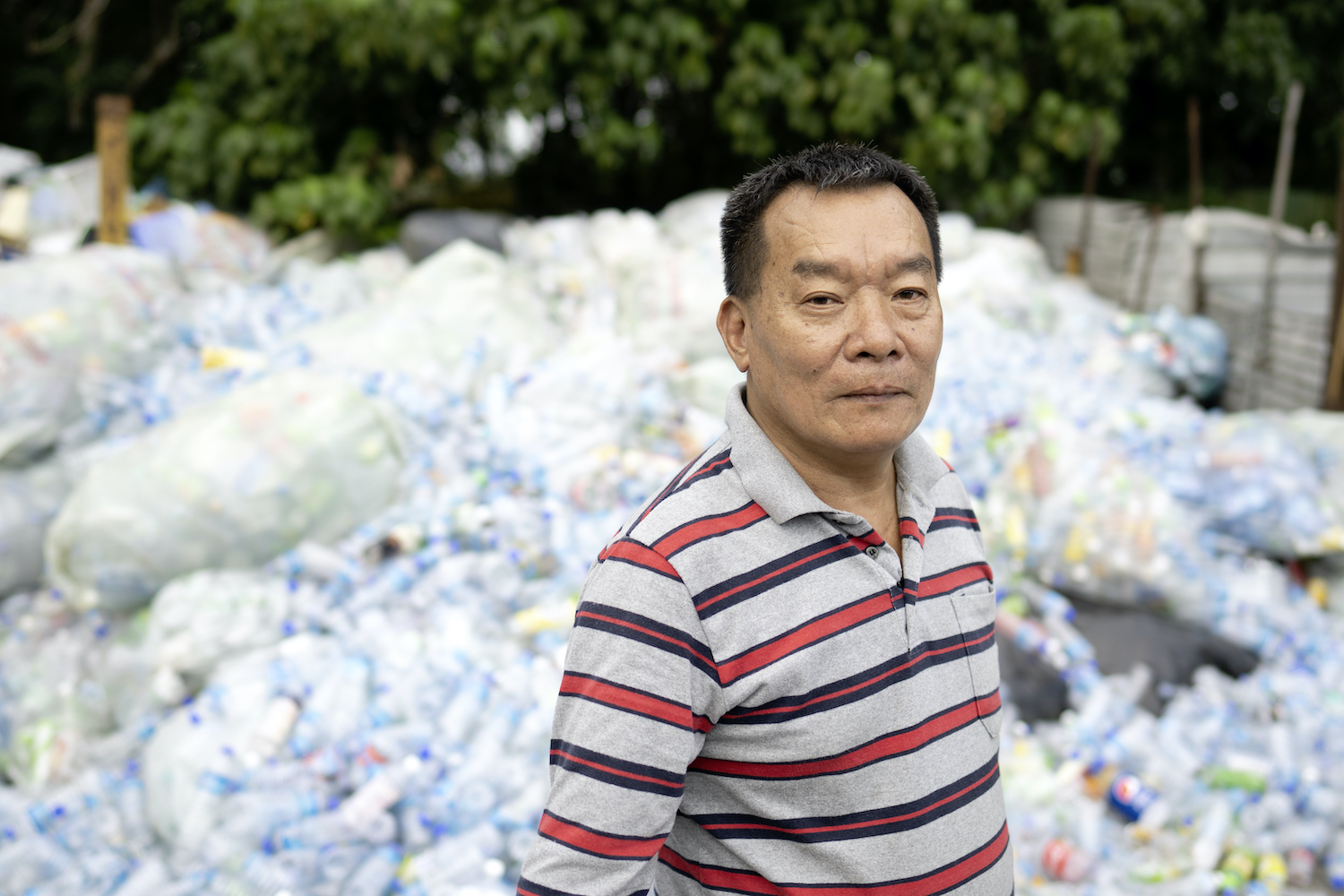
(Image: A First Mile supply chain worker at a plastic collection center in Taiwan.)
The journey for Puma as it turned waste to athletic wear
The Puma x First Mile collab diverted more than 40 tons of plastic waste from landfills and oceans. Or, to give an exact number, that's 1,980,286 plastic bottles.
Each piece of clothing in the collection — ranging from jackets and training pants to T-shirts and leggings — contains 95 percent recycled plastic. The line also includes 10 footwear designs, made from 50 percent recycled plastic on average.
But the social story makes this collection about much more than recycling. First Mile harnesses the work of locals, who collect plastic bottles in their communities and bring them to collection centers. Further down the supply chain, recycling facilities grind these bottles into plastic flakes, which then become pellets and, eventually, fibers for textiles.
“We hope that whoever buys this collection feels good about this purchase, not just in terms of choosing something that uses sustainable material, but knowing that those entrepreneurs in the first mile are being connected to this product, because it’s their material going into it,” Kelsey Halling, head of partnerships for First Mile, said in a statement.
The organization and its partners have diverted more than 1.3 million pounds of plastic waste, or over 30 million bottles, to date.
Its partnership with First Mile also helps Puma meet the objectives within its Forever Better strategy. This overarching sustainability trajectory includes climate goals — namely, to reduce direct and indirect emissions by 35 percent from 2017 levels by 2030. Under Forever Better, Puma also aims to get 90 percent of its cotton, polyester, leather, and paper and cardboard packaging from more sustainable sources by the end of this year.

More brands now churn plastic waste into new products
Puma isn't the first brand to partner with First Mile to combine recycling with upward social mobility. HP, among its various sustainability programs, has long recycled its used ink and toner cartridges. The Silicon Valley giant started its Planet Partners program nearly 30 years ago so customers could return their used cartridges. HP says it has used 107,000 metric tons of recycled plastic to manufacture more than 4.2 billion ink and toner cartridges through 2018. The company began partnering with First Mile to source recycled plastic bottles from Haiti for use in ink cartridges, desktop monitors and more.
And more broadly, making new products from old plastic is becoming en vogue in the apparel space. Converse, for example, recently released a circular take on its iconic Chuck Taylors. Branded Converse Renew, the “Second-Life Chucks” are made from cotton canvas waste collected in the company’s factories. The cotton is mixed with polyester and turned into yarn, which becomes the base for the regenerated cotton canvas. The final product contains anywhere from 30 to 40 percent waste cotton, and the outsoles are made from ground recycled rubber.
Timberland launched its Timberland x Thread men’s footwear collection made with Thread’s recycled fabric, Ground to Good, in 2018. The fabric comprises up to 50 percent recycled plastic bottles collected in Haiti and Honduras. In addition, the outsole of the shoes is made with 15 percent recycled rubber.
Every year, consumers and manufacturers create about 300 million tons of plastic waste, which is equivalent to the weight of the entire human population, according to U.N. Environment. Over 8 million tons of plastic waste fill the oceans every year. If plastic waste continues to be produced at this rate the oceans will have more plastic than fish by 2050. More efforts that duplicate the work of brands including Puma, Converse, HP and Timberland can help prevent such a scenario from becoming a reality.
Images courtesy of Puma
Mining Giant Rio Tinto Shames Climate Deniers With 2050 Zero-Emissions Goal
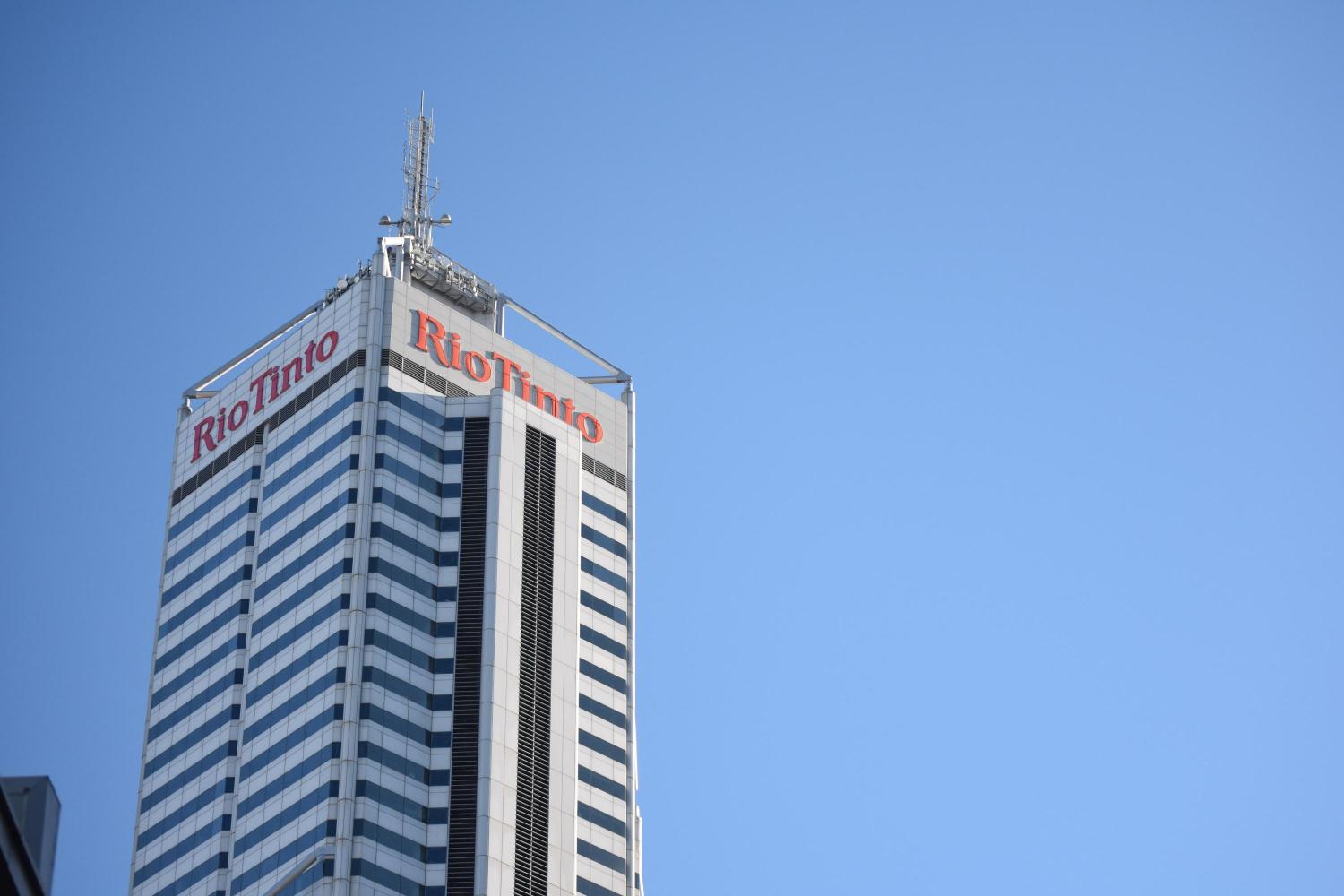
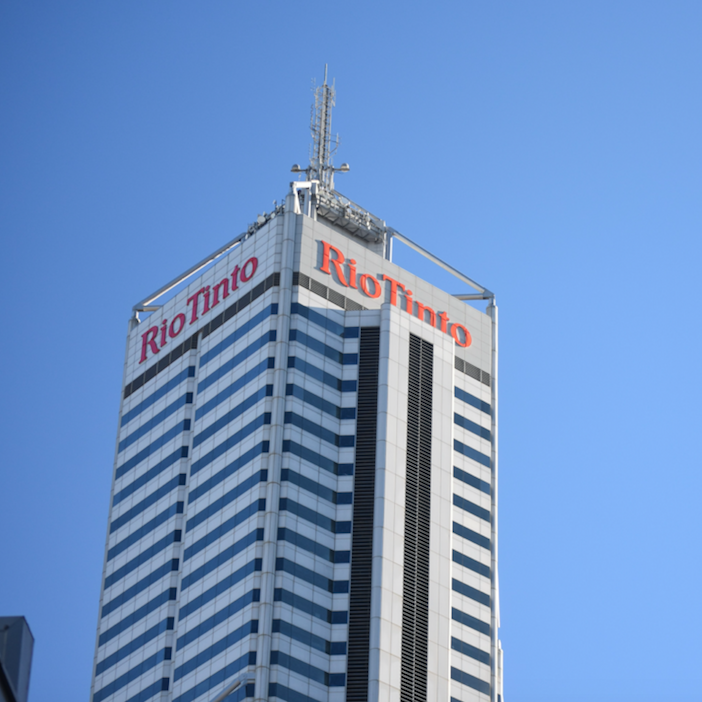
Last week, leading global metals and minerals producer Rio Tinto announced a 2050 zero-emissions goal for its operations. Critics quickly found fault with the plan, which is understandable considering the company’s past. But for its part, Rio Tinto says it's looking to the future — and its 2050 goals may put renewed pressure on government leaders who remain reluctant to articulate a forceful national climate policy.
A quick shift out of coal for Rio Tinto
Rio Tinto is an Anglo-Australian multinational. Soon after its founding in 1873, the newly formed company purchased an ancient copper mine in southern Spain and transformed it into the top copper producer globally. The mining giant diversified over the years to cover coal and uranium, as well as other metals and minerals.
Anecdotal evidence suggests Rio Tinto may have seen the climate change writing on the wall before many of its peers. In 2009, it sold one of its major coal holdings — Jacobs Ranch in Wyoming — to U.S. producer Arch Coal. At the time, Jabobs Ranch was the fourth largest coal mine in the U.S.
Whether the motivation was climate risk mitigation or looming competition from low-cost natural gas, Rio Tinto continued selling off its coal assets in the years since.
Arch Coal went bankrupt in 2016. At least 11 other U.S. coal producers filed for bankruptcy in the years after, as demand for coal swung downward. Although Arch Coal emerged from chapter 11 in 2018, its future is far from certain as the pace of climate action accelerates.
Meanwhile, Rio Tinto’s coal-shedding activity provided it with a platform to support the 2015 Paris agreement on climate change. In 2018, the company sold the last of its coal assets and pivoted to a new sustainability plan.
The advantages of diversification
In contrast to fossil fuel producers, Rio Tinto’s history of diversification provides it with ample opportunity to position itself as a key player in the renewable energy transition. And the company is not letting that opportunity slide by.
On its website, Rio Tinto is quick to emphasize that it produces copper and iron ore for steelmaking, two materials essential for making wind turbines, solar arrays and electric vehicle batteries, among other clean technologies.
The company’s aluminum operations also provide it with avenues into fuel efficiency and other clean tech areas, as the lightweight metal makes its way into auto manufacturing and other major commodities.
A plan for climate action
Rio Tinto described four climate action areas under its newly announced 2050 zero-emissions plan. Continuing to produce raw materials for the low-carbon economy of the future tops the list, specifically aluminum, copper and high-grade iron ore.
That’s not particularly challenging since Rio Tinto already has a head start. However, it certainly helps from a marketing angle, and the emphasis on the low-carbon economy may provide Rio Tinto with a pathway for winding down parts of its business that support fossil fuel production and use.
The company also has a head start in its second action area of focus, which involves reducing the carbon footprint of its mining and smelting operations. Thanks largely to hydropower, it already uses 76 percent renewables to power the operations it manages, particularly in regards to the energy the company requires for aluminum smelting.
Rio Tinto is also a member of the ELYSIS partnership, which launched in 2018 to develop new technology for zero-emission aluminum smelting. And last month, the company also announced its first major solar investment, a massive $98 million solar-plus-storage project for the new Koodaideri iron ore mine in Western Australia.
Though critics of Rio Tinto's sustainability plan have pointed out that it falls short in the area of value chain decarbonization, a third part of the action plan — cleaning up the carbon footprint of the steel industry — does take a step in that direction. Work in that area began last year in partnership with China Baowu Steel Group and Tsinghua University.
Putting pressure on governments to act
The company's fourth and final focus area involves planning for resiliency and climate impacts. That’s interesting from a climate advocacy perspective, because it provides the company with leverage to lobby for change as its facilities — and its jobs — are threatened by rising seas, extreme weather and other impacts.
The new plan also appears to put Rio Tinto’s industry partners on notice that the company will disengage itself from relationships that are inconsistent with its position on the Paris agreement:
“On the complex issue of climate change, we believe that significant progress towards a solution will only occur where there is broad engagement," the company's new climate plan reads. "We advocate for policy consistent with our public climate change position and the principles contained within it.”
To motivate executives to meet a near-term 2030 emissions goal, the plan also deploys a strategy that links executive pay to progress, similar to that announced by Royal Dutch Shell in 2018.
If the intent is to encourage executives to consider their own pocketbooks and lobby more aggressively against coal stakeholders and for climate action, the strategy may already be taking hold.
In October, Ben Butler of The Guardian reported that Rio Tinto has been threatening to shut down its three aluminum smelting operations Australia, which depend on electricity from coal instead of renewables. The company has repeatedly insisted that operations are not sustainable at current electricity costs, considering competition from Asian sources, Butler reported. At the time, Australian policymakers did not take the threat seriously.
Butler cited the country’s former resources minister, Matt Canavan, who said: “If we turn our back on coal, you turn out the lights on aluminum, it’s as simple as that.”
Well, that assumption is not so simple. Rio Tinto grabbed the media spotlight when it announced the new $98 million solar-plus-storage project last month, and it almost certainly caught the attention of coal stakeholders in Australia.
When completed in 2021, the 34-megawatt solar array will fill all of the Koodaideri mine’s electricity demand during peak daylight hours. With 12 megawatt-hours in energy storage capability, Rio Tinto expects solar energy to provide for an average 65 percent of the mine’s electricity demand.
That could be just a sample of things to come as the cost of solar power and energy storage continue to head downward.
And regardless of the critics, Rio Tinto’s climate plan may have real teeth in it after all.
Image credit: Mikolaj Felinski/Unsplash
Editor's note: An earlier version of this story mistakenly stated that Rio Tinto uses 67 percent renewables to power the operations it manages. It uses 76 percent renewables. We regret the error.
Yes, ‘Pre-Competitive Collaboration’ Is a Thing: Just ask the Salmon Industry
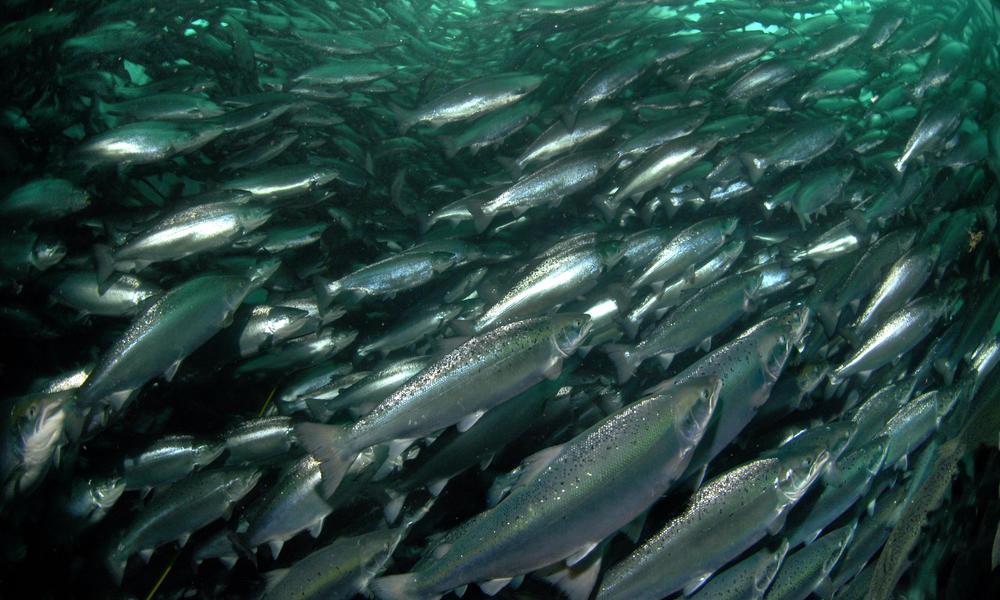

In just six years, the Global Salmon Initiative (GSI) says it has helped 40 percent of the world’s farmed salmon market attain Aquaculture Stewardship Council (ASC) certification. For comparison, Forest Stewardship Council certification has only achieved 16 percent market penetration within industries relying on forestry in 25 years, while Marine Stewardship Council certification has reached just 12 percent of wild caught fish during its 20 years of existence.
How has the Initiative achieved this unprecedented, rapid growth of ASC certification? Katherine Devine, director of business case development at the World Wildlife Fund (WWF), recently issued a case study, The Business Case for Pre-Competitive Collaboration, which details the primary mechanism behind that growth: pre-competitive collaboration.
What is pre-competitive collaboration?
Many companies’ failures to make good on commitments to stakeholders can be attributed to going at it alone, even with the best of intentions. Not only does this present an overwhelming set of tasks, such a scenario is just plain unrealistic. No single company can hope to tackle the simultaneous issues that include plastic pollution, climate change, fish stock depletion and deforestation.
The solution goes beyond having third parties hold these companies accountable. Companies and their partners need to ensure that they can facilitate information sharing that in the end, will foster greater trust among the general public, while also showing the way to positive financial returns.
How the salmon industry succeeded by planning ahead
In 2013, the 17 salmon aquaculture companies who made up almost 70 percent of the world’s production launched GSI – and several years later, their efforts turned out to become a case study of how a pre-competitive collaborative effort can succeed. These companies made a bevy of financial and time commitments, which have resulted in 40 percent of the industry’s ASC certification.
GSI members have pledged that 100 percent of their farms will achieve ASC certification by 2020. Although at press time the industry that the total may only hit 75 percent by the end of this year, the industry’s progress, attributed to the collaborative efforts of the GSI, has been rapid compared with other industries.
How salmon industry stakeholders benefitted from a more proactive strategy
ASC certification has a significant impact on production, such as greater feed efficiency, safer and more efficient disease management, and in the end, a safer supply of seafood.
One challenge the salmon industry had to confront was the amount of energy attributed to the production of fish for human consumption. To that end, farmed fish operations has long been notorious for having a feed conversion rate ranging from 1.5 to one (as in the weight in kilograms of feed necessary to produce one pound of fish), and in some extreme cases, as high as four to one.
With feed companies, GSI members on average found that they were able to reduce the amount of fish meal use by 17 percent. The result was that feed conversion rate has declined to an industry average of 1.2 to one – and in some cases, an efficiency of one to one.
Meanwhile, the medicinal treatment of pests such as sea lice, long a risk for salmon farmers, has fallen by 50 percent among GSI members. That drop is in part due to members sharing information about non-medicinal treatments such as laser treatments, hydrogen peroxide baths – instead, tactics such as releasing wrasse a small fish that eats lice, helped eliminate the need for more toxic treatments. By pooling their knowledge, more salmon farming operations were able to incorporate safer treatments and ultimately, unlock greater efficacy.
The salmon industry’s success with pre-competitive collaboration could extend far beyond the fishing industry. The WWF is correct in assuming that other industries can harness this case study as an example of how various stakeholders can develop strong relationships, work closer together and achieve sustainability goals that will reap benefits including improved brand reputations and profit margins.
Image credit: WWF
Report: Supposedly 'Recyclable' Material is Clogging U.S. Landfills, Often Shipped Abroad
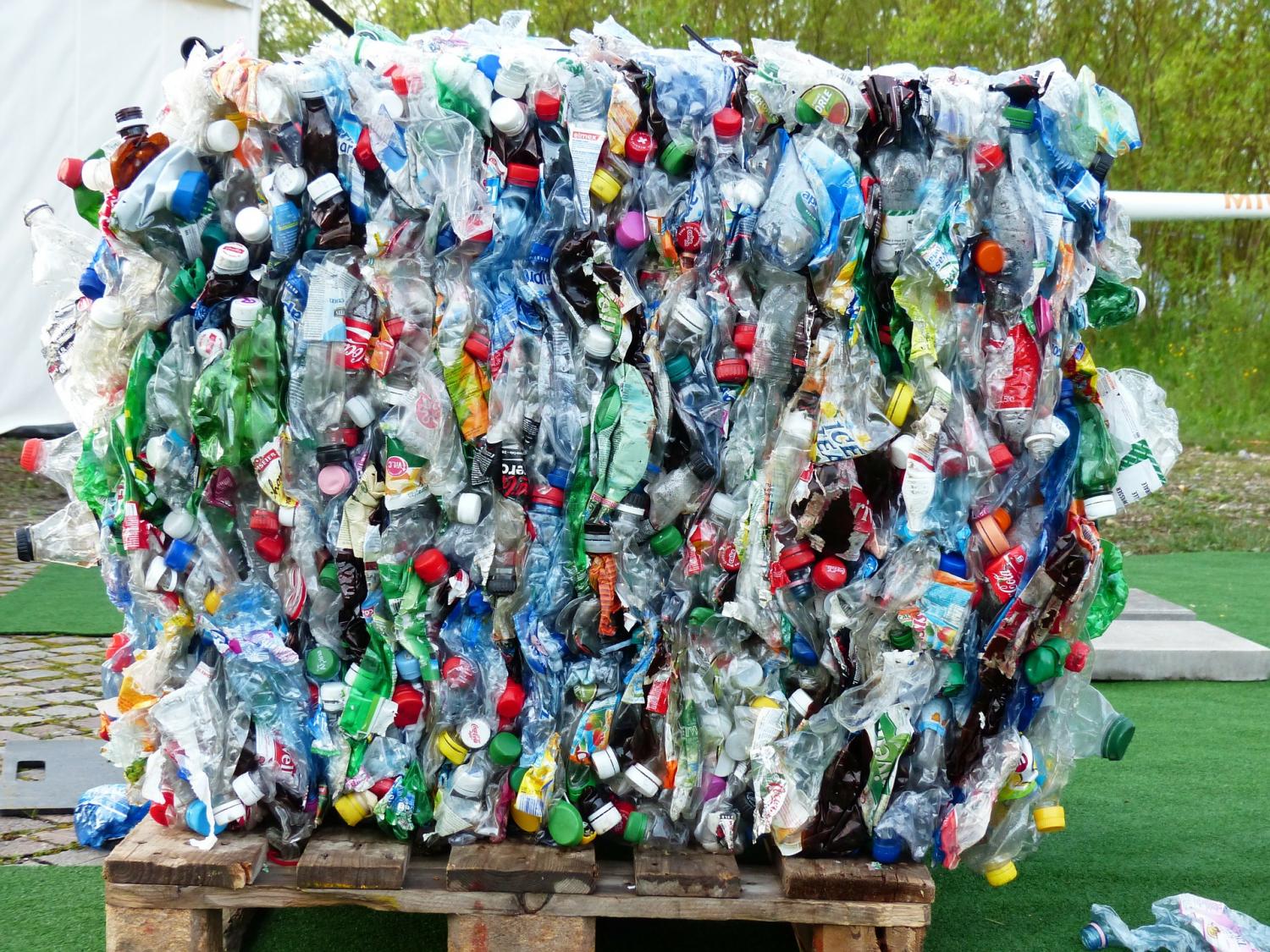
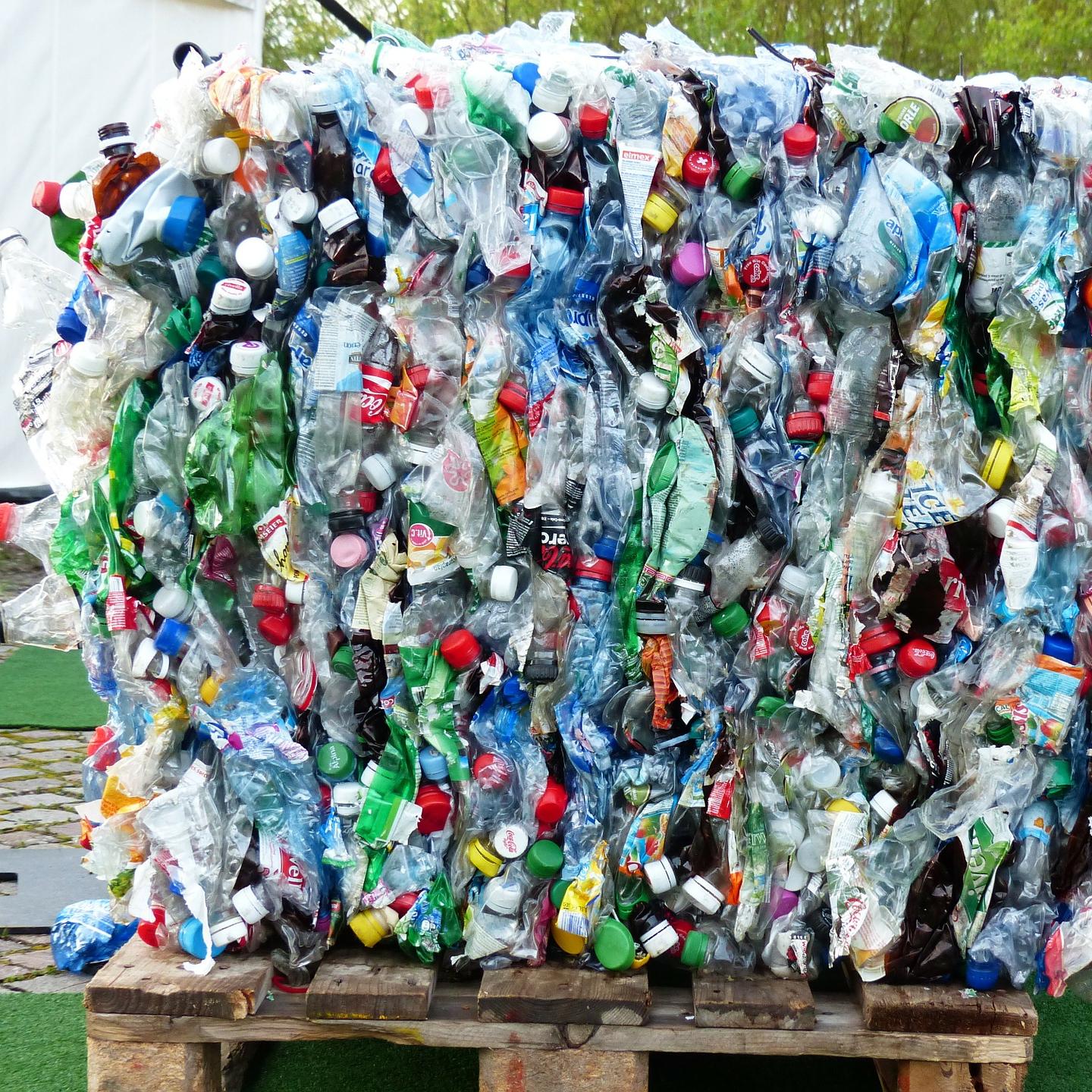
In a recent report, Greenpeace found recycling rates to be astonishingly low at all 367 operating material recovery facilities (MRFs) across the United States. Countless items that many consumers assume to be recyclable are either landfilled or shipped far away from the municipalities in which they were first collected.
Just a few of the findings from Greenpeace’s study, which looked at data between October 2019 and January 2020, include the discovery that only 14 percent of facilities accept plastic clamshells (popular takeout containers) and a scant 1 percent are able to process plastic knives, forks, spoons, straws and stirrers. Plastic cups are accepted at 11 percent of facilities, and single-use plastic bags are recycled at a mere 4 percent.
That leads many to wonder: Are our products recyclable in reality, or only in theory? And can recent announcements of new recycling technologies and partnerships make any difference?
Just how much is recycled?
As with any contentious issue, the numbers vary per source.
Joe Pickard, an economist at the Institute of Scrap Recycling Industries (ISRI), offered the standard argument in a recent report from the industry group: “Recycling is a strong and robust industry that preserves our planet and sustains our natural resources.” ISRI’s latest Recycling Industry Yearbook concluded that the processing of recyclable materials across the U.S. increased to 138 million metric tons in 2018, up from 135 million the year before.
Further, U.S. scrap exports grew by 7 percent, to 40.4 million metric tons in 2018, contributing to global manufacturers’ consumption of more than 900 million metric tons of scrap metal. That amount, according to ISRI, is approximately 40 percent of the raw material that industries worldwide consume.
Still, the Recycling Partnership's 2020 State of Curbside Recycling Report found that only 32 percent of available materials from single-family homes in the U.S. is recycled. That means Americans send over 20 million tons of recyclable materials to landfill each year.
The Recycling Partnership’s CEO, Keefe Harrison, advocated for not only increasing our curbside pickups, but also incorporating circular design into product development. In a public statement, Harrison said, “This is an important point in time to pivot our society's current make-to-waste approach to a more circular economy – one that focuses on everything from smart chemistry and design, production, all the way through to reuse and recycling.”
Where are these “recyclables” going?
Beyond our own landfills, Greenpeace found a diverse range of destinations for our materials that are marked with the chasing arrows recycling symbol but in reality have few second-life markets.
California leads the U.S. in their export of plastic waste to countries that have notoriously poor waste management practices, sending more than 175 million pounds of waste abroad in 2019. Texas (80 million pounds) and Illinois (77 million pounds) follow closely behind.
U.S. states and territories that exported a significant amount of plastic (10 million kilograms or 22 million pounds) in 2019 included Georgia, New Jersey, New York, South Carolina, Ohio, Puerto Rico, Virginia, North Carolina and Tennessee. A city representative from Seattle, for example, told Greenpeace that 60 percent of the city’s plastic waste is exported overseas.
Popular destinations for California’s waste that is not landfilled or recycled within the Golden State include Vietnam, Indonesia, Pakistan and India. MRFs in Tucson, Arizona, are still able to sell mass quantities of trash to China, and they also export to Taiwan, Indonesia, and India. Sonoco’s export services for North and South Carolina send materials to “countries all over the world.”
Who’s at fault?
It’s easy to blame consumers, but environmental groups and policymakers have recently shifted focus to manufacturers.
“Retailers and consumer goods companies across the country are frequently putting labels on their products that mislead the public and harm America’s recycling systems,” John Hocevar, oceans campaign director for Greenpeace USA, said in a statement.
As an example, the report shows a photo of a full body shrink sleeve in clear violation of two counts of the Federal Trade Commission's Green Guides, which state that recyclability claims are deceptive if any aspect of the item limits its ability to be recycled, as well as strictly forbidding companies from requesting that consumers remove components to enable recycling.
Greenpeace’s findings align with the intent behind the recent Break Free from Plastic Pollution Act of 2020, which aims to put the onus of plastic recyclability on manufacturers instead of municipalities and consumers.
Image credit: Hans Braxmeier/Pixabay
Hyundai Puts the Pedal to the Metal for Renewable Hydrogen


The race to replace hydrogen vehicle fuel derived from natural gas with renewable hydrogen just became a little more interesting, thanks to Hyundai. The automaker recently announced a fuel cell vehicle project in South Korea powered by fossil hydrogen, but it is also collaborating with various organizations on projects that deploy renewable hydrogen in the U.S. and Switzerland.
The race to renewable hydrogen
For companies looking to decarbonize their fleets, hydrogen fuel cell vehicles offer an alternative to battery EVs. They have zero tailpipe emissions, except water.
Fuel cell vehicles also have the advantage of fueling up in minutes like a conventional vehicle. And overall, they have a longer range than battery-powered electric vehicles (EVs).
The problem is that most hydrogen today is sourced from natural gas. Companies that seek next-level, supply chain decarbonization need to focus on opportunities in the emerging field of renewable hydrogen.
Hyundai hedges hydrogen bets
Hyundai is one auto manufacturer pushing the shift to renewable hydrogen, though it is still involved in the fossil fuel-based hydrogen field.
Last week, Hyundai announced that it will deliver a total of 12 fuel cell trucks to South Korea’s Gwangyang Port in South Jeolla Province. Unfortunately for green hydrogen advocates, apparently the idea is to fuel the trucks with hydrogen from petrochemical facilities at the port.
On the renewable side, Hyundai is already engaged in a long-running collaboration with the U.S. Department of Energy for fuel cell vehicles, and earlier this year it loaned five of its splashy new Nexo fuel cell sedans to the DOE for use in the greater Washington, D.C. region. The cars will be used for a technology validation study that includes fueling up with renewable hydrogen.
The DOE plans to send its Nexos to different parts of the U.S. for study. That is a significant development, because currently hydrogen fuel cell vehicles are mainly confined to California, where a hydrogen fuel station network is gradually taking shape.
The chicken-and-egg challenge for renewable hydrogen
Outside of California, companies seeking either fossil or renewable hydrogen are faced with the same problem that bedeviled battery EVs in the early years: Why invest in zero-emission vehicles when there is no convenient fuel station?
The DOE does not plan to leave its new Nexo fleet stranded without fuel. At least some of the cars will have access to compact renewable hydrogen fuel stations, regardless of where they are sent.
The Nexo collaboration involves the so-called “SimpleFuel" fuel stations developed by the U.S. company IVYS Energy Solutions, with support from the DOE. SimpleFuel units are far less expensive than building new fueling station infrastructure: They are modular, shippable, and can fit into a space the size of a parking spot.
They are also designed to produce renewable hydrogen on site: The SimpleFuel system “splits” hydrogen from water. Ideally, renewable sources of power will provide the electricity needed to run the system.
Switzerland scales up fuel cell trucks
The South Korea project may be a step backward for decarbonization, but it is dwarfed by another Hyundai project in Switzerland that involves the launch of 1,600 fuel cell trucks.
The trucks will fuel up under an arrangement with the renewable hydrogen consortium Hydrospider. As with SimpleFuel, Hydrospider is zeroing in on water-splitting to produce renewable hydrogen.
Hydrospider’s plans also involve deploying renewable energy to run its water-splitting operation. Among the consortium members is Alpiq, a leading Swiss energy producer focusing on hydropower. The fuel cell company H2 Energy and the industrial gas and engineering firm Linde AG round out the membership.
Keeping an eye on the renewable hydrogen market
The jury is still out on whether or not vehicles running on fuel cells can compete with either (or both) conventional vehicles and battery-powered EVs.
Analysts are all over the map. Some see a cost-competitive future looming just over the horizon, in about five years or so. Others see renewable hydrogen edging into the market for stationary energy storage in the near future, while struggling to get a foothold in mobile applications.
Time will tell. In the meantime, three states in the far reaches of the U.S. northeast — Maine, New Hampshire and Vermont — are already putting out feelers for stationary energy storage systems that can work with renewable hydrogen.
The aim is to use hydrogen as a storage medium for wind and solar energy, allowing more renewables into the grid. Alleviating transmission bottlenecks is another goal of the projects.
The energy storage angle provides renewable energy producers with new opportunities to monetize their facilities during periods of low demand.
If that trend takes hold, economies of scale could help bring the cost of renewable hydrogen down, making the prospects for a competitive fuel cell vehicle market look a little brighter.
Image credit: Hyundai USA
This 'Vegan Wool' is Made From Desert Plants That Need No Water


The future of sustainability within the fashion industry is not looking good at the rate it is going, and one of the culprits is an ever-widening gap between disposable fast fashion and durable, sustainable clothing. Can apparel companies bridge the gap? One designer believes so, and hopes a new fabric dubbed "vegan wool" can help.
Developed by South Indian fabric purveyor Faborg, the wool-like fabric is made partly from desert plants that can grow with virtually no water. The material is making its debut in children's brand Infantium Victoria’s fall 2021 lineup.
A plant-based, vegan alternative to wool
Vegan plus wool equals Weganool, and that’s the name of this “wooly” fabric designed in part to help reduce the apparel industry’s huge carbon footprint. Although Weganool has the properties of traditional wool, the fabric is made entirely from plant sources — 30 percent calotropis and 70 percent organic cotton, to be exact.
Infantium Victoria, a children’s clothing designer based in Germany, says Weganool has many environmental benefits. Among the company’s claims: The material is sustainable from production to disposal; one kilogram of Weganool saves 9,000 liters of drinking water (compared to production of 100 percent cotton yarn), and the fabric is built to last — it is unshrinkable with every wash and is generally more durable than non-vegan fabrics.
Although wool imitations are not original in the industry, this fabric stands out because it is zero-waste and vegan. Leftover materials in Weganool production are transformed into a compound that is both a bio–nutrient and insect repellent, which eliminates waste. These far-reaching efforts to cultivate an eco-friendly material indicate why Weganool has been labeled “more sustainable than dirt.”
The new ingredient? A desert shrub
Calotropis, the desert plant from which the vegan wool is partly sourced, is a tall, flowering shrub that thrives in harsh growing conditions without human intervention, water, fertilizers or pesticides. It grows wildly in deserts and other arid climates in Africa and several Southeast Asian and Middle Eastern countries. The plant, also called giant milkweed, has thick stalks and large, pale flowers.
The durable plant fibers have been compared to silk. But the versatile flowering plant has other interesting uses, ranging from medicinal products to carpets.
Women are the main producers within Weganwool's supply chain, and this work offers them jobs in dry pockets of the world where most plants and crops can’t survive. The business also boosts the rural economies through the development of a new agricultural channel. Areas of dry land unsuitable for many crops is ideal for growing calotropis, transforming fallow ground into crop land that can be a source of income.
However, if Weganool becomes an industry trend, care should be taken to ensure that the plant source is not exhausted, as a large supply of calotropis currently does not exist.
Why Infantium Victoria is betting on vegan wool
Although China has shown interest in using calotropis plant fibers for clothing production, Infantium Victoria’s release of Weganool is a first for the apparel industry.
The company specializes in organic and vegan clothing options, according to the website. The company describes its apparel as “slow fashion” and claims its products are 100 percent organic and have been vegan-approved by PETA since 2015. Infantium Victoria’s many sustainability commitments include cruelty-free fashion, ethical and organic materials, and sustainable processes and delivery, according to its website.
But will the sustainability waves this children’s designer company says it is making generate a ripple effect that influences other apparel companies to step up their game?
Time to take on the apparel industry’s waste problem
In 2015, the fashion industry was responsible for creating 1.2 billion tons of greenhouse gases. Currently, estimates suggest the sector has contributed about one-fifth of the global water pollution and one-third of the microplastics in oceans.
Sustainable progress within the global apparel industry has leveled off in recent years, Fast Company reports. However, Weganool is a classic example of using less of the world’s precious resources to meet consumer demand, and Infantium Victoria is not the only apparel company working to take back some ground. Many apparel companies are committed to inventing new processes and designs to fight the ramifications that the current waste will invariably bring to the environment. Some of these strides include less-wasteful production processes, more plant-based clothes and eco-friendly shoes made from recycled items such as ocean plastic, wool or even trash.
But are these trends enough to curtail the environmental challenges we see on the horizon? By 2030, the fashion industry is expected to produce 102 million tons of clothes and shoes worldwide. That’s equal to the weight of 500,000 blue whales. Nevertheless, there is still hope for a more sustainable textile and clothing industry. But in the end, it will be the changing expectations of consumers’ demands that will drive this change.
Image credit: Infantium Victoria
The Publishing Industry Tries to Close the Books on Climate Risk


To paraphrase Mark Twain, rumors of the print book’s death have been greatly exaggerated. About ten years ago, it seemed like books kept showing up on the endangered species list, but print books continue to outsell e-books in every category. Independent bookstores are also making a comeback in the age of Amazon, drawing more people than ever. And even though print books continue to outsell e-books, the publishing industry, in both print and digital formats, has an environmental impact. The manufacturing of e-book readers, for example, requires resources and contributes electronic waste.
The publishing industry supply chain has a complex global footprint
Nearly 700 million books were sold in 2019, and the carbon footprint of these printed books is complicated. After they are printed, these books need to be packaged and delivered. The logging of trees at the start of the process leaves a complicated web of impacts, from pollution to the destruction of natural habitat to carbon emissions. And the logging of all this data presents challenges, too, as the production of paper, transportation, manufacturing facilities, warehouses, retail stores and libraries all require water and energy.
While we have all been reading these books over the last few years, the publishing industry has made strides to improve its overall sustainability. In 2016, Penguin Random House (PRH), the largest of the Big Five publishing houses, announced its 2020 Social Responsibility Commitments, which set two targets: to source 100 percent of its paper from mills certified by the Sustainable Forestry Initiative or the Forest Stewardship Council and to cut its carbon emissions by 10 percent. By the end of December 2019, the company had purchased 98 percent of its certified paper by mills that had earned sustainability certification. PRH had also surpassed its 10 percent goal emissions goal, adding that it could likely reduce its emissions by 20 percent by 2025.
Penguin Random House is determined to go carbon neutral
With those achievements in hand, Bertelsmann, which acquired majority ownership of PRH in 2019, announced plans in February 2020 that they would be carbon neutral by 2030, with PRH’s targets as an integral part of the strategy to meet that goal. The plan includes switching to 100 percent renewable power, improving energy efficiency, working with partners to reduce emissions from the print and digital supply chain, and finding a way to offset the rest of those emissions.
Typically, when we think of books, print or e-books, the sustainability aspect centers on paper or e-waste. While those are probably the biggest direct environmental impacts, the carbon neutrality goal is important because it looks beyond the materials. The energy and water required to produce, transport, and distribute books across the globe is considerable - and the extent of the impact is unclear.
The most recent industry-wide evaluation of carbon emissions coming from the publishing industry dates back to 2008. And estimates can range widely because of the number of variables involved, including where and how paper is sourced, the type of ink used, and manufacturing facilities’ energy use. In order to set its science-based targets, Bertelsmann must be clear about its own carbon footprint. As more companies in this space step up to reduce their own emissions, better data will need to be collected, and they will need to share this information to enable other publishers to emulate such goals.
Publishers face risks from deforestation to water scarcity
Deforestation is estimated to represent 8 to 10 percent of global carbon emissions. But energy and transportation top the list of emitters. Then we need to add another factor, and that is the reality water will likely be the resources most affected by climate change. All of these challenges play a role in what could happen in the future with the books we enjoy.
Tackling climate change requires every stakeholder within the publishing industry to contribute to succeeding on the world’s most pressing challenge. Books have fed our minds for thousands of years; now, those who publish them can help solve our greatest challenge.
Great Barrier Reef Bleaching Threats Loom over Australia


Researchers at Australia’s Great Barrier Reef Marine Park Authority (GBRMPA) are predicting a coral bleaching event during the southern hemisphere’s summer. Analysts say the event could be the most widespread seen to date, but not as intense as previous occurrences.
The Great Barrier Reef has seen bleaching, overfishing and pollution, which not only harm wildlife, but also threaten its Wold Heritage status. The back-to-back bleaching events of 2016 and 2017 affected two-thirds of the extensive reef. Still, the GBRMPA says hope is not lost.
Despite threats and bleak possibilities, GBRMPA’s chief scientist, David Wachenfeld, told reporters in Sydney last year: “With the right mix of local actions to improve the resilience of the system and global actions to tackle climate change in the strongest and fastest way possible, we can turn that around.”
The business case for saving coral
Coral bleaching occurs with a rise in water temperature or intense ultraviolet rays. The resulting whiteness occurs when the coral expels its mutualistic algae called zooxanthellae. This leaves the coral vulnerable and without a source of food, which normally the algae would photosynthesize.
The loss of coral doesn’t happen in isolation, though. Coral provides the building blocks of reefs and shelter and food to the marine life that live within these structures. Without healthy coral, the wellbeing of fish and wildlife is threatened.
Thus, major industries for coastal communities, including fishing and tourism, hang in the balance. In 2017, the international financial advisory consultancy Deloitte calculated that activity in and around the Great Barrier Reef created 64,000 jobs and generated approximately US$5 billion for Australian businesses and communities.
The report emphasizes the immense impact of the reef: “The livelihoods and businesses the Great Barrier Reef supports across Australia far exceeds the numbers supported by many industries we would consider too big to fail.”
Reports about the reef and predictions for its future may seem bleak, but just this month, marine biologists have discovered dozens of new coral species along the Great Barrier Reef.
“On almost every dive we were finding species that aren’t in the books,” Professor Andrew Baird from the ARC Centre of Excellence for Coral Reef Studies at James Cook University told SciTechDaily.
Are businesses stepping to the plate for the Great Barrier Reef?
Two years ago, the Australian government invested more than US$377 million to support the Great Barrier Reef. Most was allocated toward the Great Barrier Reef Foundation (GBRF), which monitors and restores the reef, protecting it from pollution and the crown-of-thorns starfish.
This marked the largest funding commitment for reef conservation and management in Australian history.
Business is part of the solution. Over the past 18 years the GBRF has received $2.5 from the private sector for every $1 from taxpayers, GBRF chairman, John Schubert, told the Australian Financial Review. And the foundation’s board of directors includes corporate leaders and scientists alike. Schubert himself was chairman of the Commonwealth Bank of Australia.
Despite doubts about corporate interests in the foundation, the government saw the GBRF as the most effective investment toward the reef. According to the Australian Financial Review, the Prime Minister was impressed by how well the GBRF has been able to leverage financial support from the private sector for its activities in the reef.
Yet, there remains work to be done on the climate front. Coal remains Australia's second-largest employer, after iron ore. And though UNESCO has, as of yet, avoided putting the Great Barrier reef on its “List of World Heritage in Danger,” if water temperatures continue to rise summer after summer, that may no longer be the case.
Image credit: Daniel Pelaez Duque/Unsplash
How Food Waste Complicates the Water-Energy Nexus


Food waste is a stubborn problem in the developed world. Globally, about a third of all food produced is wasted, which is about 1.3 billion tons per year. This statistic is even more staggering when considering that approximately 820 million people around the world do not have enough to eat. In the U.S. alone, experts estimate that 30 to 40 percent of the food we purchase goes to waste. Clearly, reducing food waste could benefit people directly, but it could also help to protect our water and energy supplies.
According to a study, 4.2 trillion gallons of water were used to produce that wasted food, half of it going to uneaten fruits and vegetables. Another study noted that about 10 percent of energy use in the U.S. goes into growing, processing, packaging, and shipping food. Further, neither of these studies consider the embedded energy in water or the embedded water in energy, so taken together, those figures should be even higher.
Consumers’ expectations contribute to food waste
In the U.S., we have been conditioned to buy only pristine produce, leaving the imperfect specimens to go to waste. Supermarkets have tried to figure out how to sell “ugly” produce, but poor sales led many of those who had started such programs to quietly end them. Some farmer’s markets and community-supported agriculture programs have had a little more success, possibly because expectations of perfectly formed fruit and veg are a little different when getting produce directly from a farm. But this has also ignited an entire industry around start-ups aiming to capitalize on food waste, with the side effect of taking business away from those small farms.
Food is nothing if not complicated. Some chains are trying to repurpose food that would otherwise be wasted by churning it into other products, like the United Kingdom retailer Tesco’s experiment with unsold bread. Meanwhile, a Dutch startup is converting unwanted apples and pears into a sugar substitute.
Which raises the point of a new trend that has emerged with surplus foods: upcycling. Upcycling has been a stable in the fashion and home goods world for some time, so it makes sense that it would make its way to food as well. For example, TBJ Foods is taking surplus produce and even surplus bacon and turning it into jams. Upcycling can be taken to centers to feed people quickly or, like TBJ Foods, preserved to lengthen shelf life.
We need to re-think agriculture’s relationship with water
Further, we should not have this much surplus to deal with in the first place. Agriculture is a water-intensive industry, and its problems are politically, socially and environmentally complex. Over a third of America’s vegetables and two-thirds of our fruits and nuts are grown in California. Despite all its efforts on climate change, the state is already feeling the impacts, especially droughts and wildfires.
Water and agriculture continue to be highly charged issues in California. With every new drought comes new renewed calls for how the state waters its farms. The reality is that the country as a whole will likely need to rethink how we structure our agricultural system to be more sustainable under the new normal of climate change.
Agriculture accounts for 80 percent of California’s water consumption. Rethinking how crops are irrigated as well which crops to prioritize, i.e., those requiring less water, are critical. Looking towards Israel, a country with a similar climate and that has essentially solved its water problem through a combination of policies, including drip irrigation, could provide some direction. And experts in California are already experimenting with innovative solutions on the ground – including ideas to generate power.
Food waste has an undeniable effect on water and energy
The energy footprint of food is critical to the solution also, up and down the supply chain, from the fields to the table. Increasing the deployment of renewable energy into the electric grid will help reduce water demand in the energy sector, freeing it up for other uses. Likewise, improving water efficiency and reducing water demand where possible will lower energy consumption.
Our food system is complex, as copious amounts of water and energy are required along the entire value chain. Better data is needed to fully understand the energy-water-food nexus, and with better data comes better solutions. Figuring out how we adapt to a changing climate will require rethinking how we grow our food as well as how we consume it.
Image credit: Pixabay
Airlines Respond to Sexual Harassment, With Murky Results


In 2018, Congress responded to widespread reports of in-flight sexual harassment by assigning a task force to address the issue. The work of the so-named “National In-Flight Sexual Misconduct Task Force” has yet to be implemented, though some airlines are already taking steps themselves. However, if the effort continues to focus on guidance for victims, it fails to address the root cause.
Sexual harassment and the airline industry
Airlines face an especially complex task in terms of addressing in-flight sexual harassment.
Internally, employee relations are still tinged with the legacy of sex-segregated roles and promotional strategies focusing on the appeal of female flight attendants. That legacy is reflected a stream of verbal and physical sexual harassment directed at flight attendants by passengers.
Over and above these issues, airlines are also trying to cope with passengers assaulting other passengers.
The passenger-on-passenger problem is a direct bottom line issue as well as an ethical one. As reported by USA Today last week, passengers are taking legal action against airlines that fail to respond appropriately when they report abuse.
Sexual harassment and the information gap
Regardless of legacy issues, airlines can avail themselves of a wealth of experience and data-driven best practices that address sexual harassment issues between employees.
When airline passengers and in-flight employees enter the mix, however, a widespread lack of tools and training specific to sexual harassment has persisted.
That information gap was highlighted in a national survey of flight attendants in 2017.
Of the flight attendants participating in the survey, 35 percent reported verbal sexual harassment from passengers within the past year. For another 18 percent, the abuse was physical.
Despite the widespread nature of the problem, only 7 percent of those experiencing harassment reported the passenger to their employer.
The others took various measures to avoid, diffuse, or deflect the situation. Overall, measures like these indicate that they lack the tools, training, and institutional support to deal appropriately with the situation.
A similar information gap surfaced when flight attendants were surveyed about passenger-on-passenger abuse.
In a 2017 survey, 20% of flight attendants reported having to intervene in a passenger-on-passenger assault. However, their airline contacted law enforcement in less than half of those incidents, and most respondents indicated that they were unaware of any guidance or training issued by their employer.
Progress on sexual harassment training
To their credit, several airlines have taken steps to update their training and guidance for passenger-on-passenger assault, a move encouraged by the Association of Flight Attendants.
In 2018 Alaska Airlines also added a line to its preflight script, encouraging passengers to report “unwelcome behavior” to flight attendants.
Though gently worded, that does convey the message that the airline has policies in place, and that flight attendants are trained to follow them.
The idea has not gained much traction, though last month Southwest Airlines updated its script to include a similar advisory.
Among other reasons, individual airlines may be hesitant to provide pre-flight guidance on reporting bad behavior, because it preemptively raises the perception that the airline is less safe than others.
Task force addresses sexual harassment in flight
It is also possible that other airlines are waiting for the Task Force to provide uniform guidance on messaging, before they update their scripts.
Some advocates doubt that the Task Force will be effective, including at least one victim of in-flight assault. However, the Task Force did hold a series of meetings and listening sessions last year. The effort focused on employee training and guidance as well as passenger awareness. Data collection and sexual harassment definition were also part of the discussion.
That is a good start, but it does not address the central issue, which is that flight attendants are on the front lines of a culture that excuses bad behavior.
Until more forceful steps are taken to remind passengers that sexual harassment is in fact a crime, the training-and-guidance approach continues to place the burden on both victims of such behavior and on flight attendants.
Alaska Airlines provided a written version of crime-based messaging in 2019. Its in-flight magazine included a warning to all passengers, admonishing them to “behave in a safe and respectful manner at all times.”
“We respect the privacy and well-being of our guests and employees,” the warning continued. “We do not tolerate inappropriate verbal, digital or physical conduct of any kind, including sexual harassment, invasive photography and assault.”
In addition to advising passengers to report “unwelcome behavior” to an employee, the warning specifically advised passengers that “any crime committed in flight is a federal offense.”
Advocating for federal action
If the Task Force does recommend industry-wide changes that focus more attention on deterring potential perpetrators, that would be a significant step forward with a ripple effect beyond the airline industry.
The #MeToo movement notwithstanding, American culture is still deeply rooted in attitudes that excuse bad behavior and punish victims for speaking up.
By unifying around federal guidelines that deter bad behavior, the airline industry could help shift the cultural landscape toward a new normal.
As an analogous situation, consider the national conversation over gun safety. Corporate leaders in the retail area have begun to realize that lax gun laws foster critical safety issues for their brick-and-mortar business. However, most have been reluctant to exercise their right to outright forbid firearms on their premises.
Some gently “request” that gun owners voluntarily leave their weapons behind, but that is the main extent of it.
More recently, Kroger, Starbucks and other retailers have come to understand that the gentle approach is not working. Inspired partly by the youth gun safety movement in the aftermath of the Parkland massacre, they are beginning to partner with grassroots organizations to advocate for state and federal laws that help ensure a safe environment for their customers.
That deterrence-oriented approach marks a clear contrast with the present practice of relying on store clerks, private security guards and bystanders to respond after the fact.
Avoiding a messaging risk
By being more up-front and specific about sexual harassment deterrence, airlines may also avoid the risk involved in messaging that vaguely encourages passengers to report “unwelcome behavior.”
The list of unwelcome in-flight behavior appears to be growing well past sexual harassment, with anything from body odor to religious discrimination in the mix.
The discrimination risk is particularly troubling, given the anti-immigrant environment stirred up in recent years.
The spread of the COVID-19 coronavirus has added yet another new wrinkle that could result in misreporting based on a person’s appearance, language, or dress and accessories.
All in all, federal guidelines that call for a more forceful, specific, and deterrence-oriented approach to in-flight sexual harassment could help shield airlines from all sorts of bad behavior, including discriminatory misreporting.
Image credit: Owen Lystrup/Unsplash